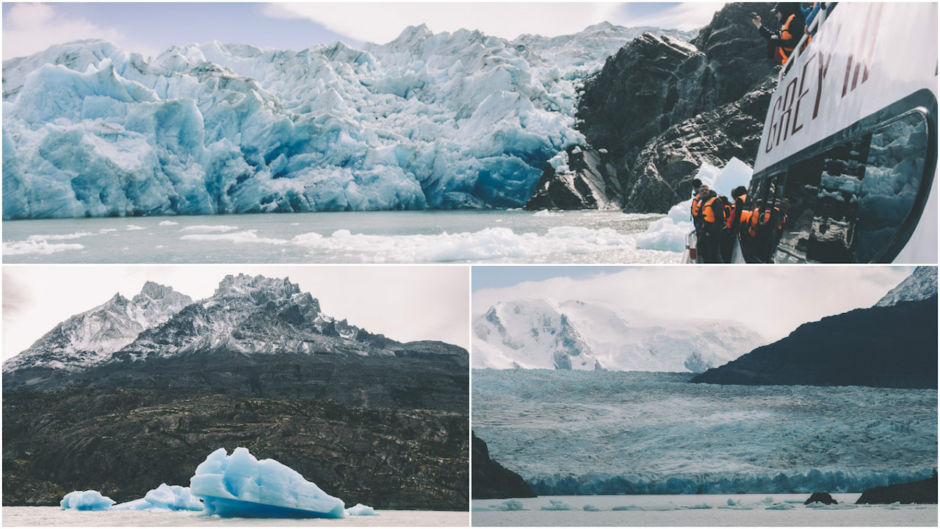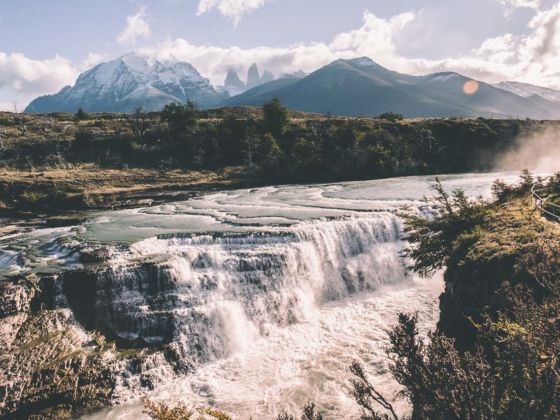MOST people who know of the South American region, Patagonia, think of its wide-open spaces — jagged mountains, massive glaciers, seemingly endless expanses of fjords and open land. It can seem to be “way out there.” And it is — split between Argentina and Chile in the southernmost parts of South America. It has become a dream destination for many travelers.

Housing at EcoCamp is located at the foot of the Torres, in Torres Del Paine National Park. The Eco Camp is the first geodesic dome hotel in the world and the first fully sustainable eco-friendly structure in South America. There are 33 domes to accommodate guests. Yoga sessions are held every afternoon in one of the domes; the community domes contain a bar and a restaurant, where a good breakfast is served in the morning and where lunch boxes are prepared for outdoor excursions. In the EcoCamp there are neither telephones nor Wi-fi signals. I personally enjoyed the refreshing break from the outside world; it forced me to really focus on where I was and the landscape around me.

To wake up in the morning and look out at the Torres del Paine is a rare and wonderful experience. The Torres del Paine (Torre Sur, Torre Central, Torre Norte) are granite monoliths eroded by glacial ice. In the native Tehuelche (Aonikenk) language, paine, pronounced PIE-nay, means "blue."

Sun, Rain, Wind: Patagonia changes in an instant.
Intermission

Lagun Azul (Blue Lagoon) is the starting point for the long hike to the base of the towers and a grazing area for guanacos - a type of llama. There is a short steep hike to a mirador with a beautiful view. Lucky travelers might see a South American grey fox, a puma, or wild horses. Cascadia Expediciones - the company running the tour I'm on - offers a Patagonian Safari, the first of its kind.

We walk in the Patagonian steppes, look for guanacos, and navigate through the snowy summits of the surrounding mountains. The wind whips around us constantly. Everything feels so big, and we feel so small.

The Paine Cascade on the Paine River, located between Blue Lagoon and Amarga Lagoon. A short walk offers a stunning view of this waterfall and the sound of its roar.

The towering view of three Torres from EcoCamp almost crowns the entire trip. The Paine Massif has magnificent peaks around the park's heartland.
Intermission

Even the fjords are huge, carving up Southern Chile

The beautiful Pehoe Lake is located in Torres del Paine National Park. The lake is fed mainly by Paine River through the Nordenskjöld Lake. The presence of minerals in the water turns its color into a startling azure.

Trekking to see the famous Grey Glacier, we walked for fifteen minutes in a frozen wind, that nearly blew us over. Just another reminder that we are tiny visitors in a huge powerful land. The Grey Glacier is one of many glaciers in the Southern Patagonian Ice Field, and worth the efforts to reach: it's enormous.

The Grey Glacier is a blue giant once measuring 270 square kilometers. To visit it, you take a boat on Gray Lake to within a few meters from the foot of the glacier. While visitors might be overwhelmed by the size of Grey Glacier, it and other glaciers around the world are melting. There are essentially at least two good reasons to visit Torres del Paine: to take in the astonishing natural beauty and to be inspired to act to end global warming and protect this irreplaceable landscape before it is gone.
[Sara was a guest of Cascadia Expediciones with accommodation provided by Ecocamp Patagonia.]
